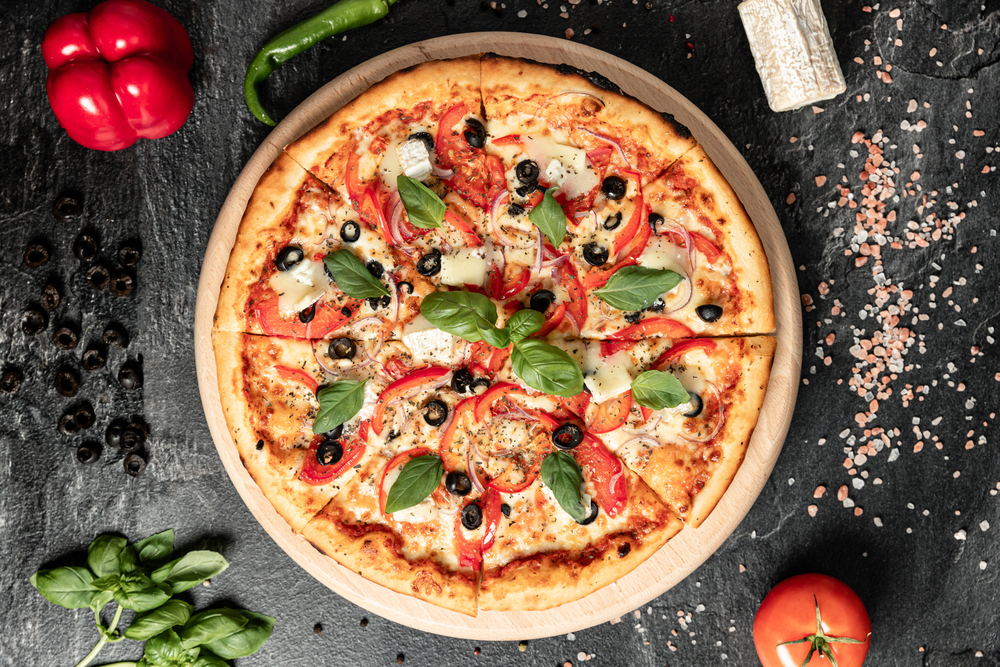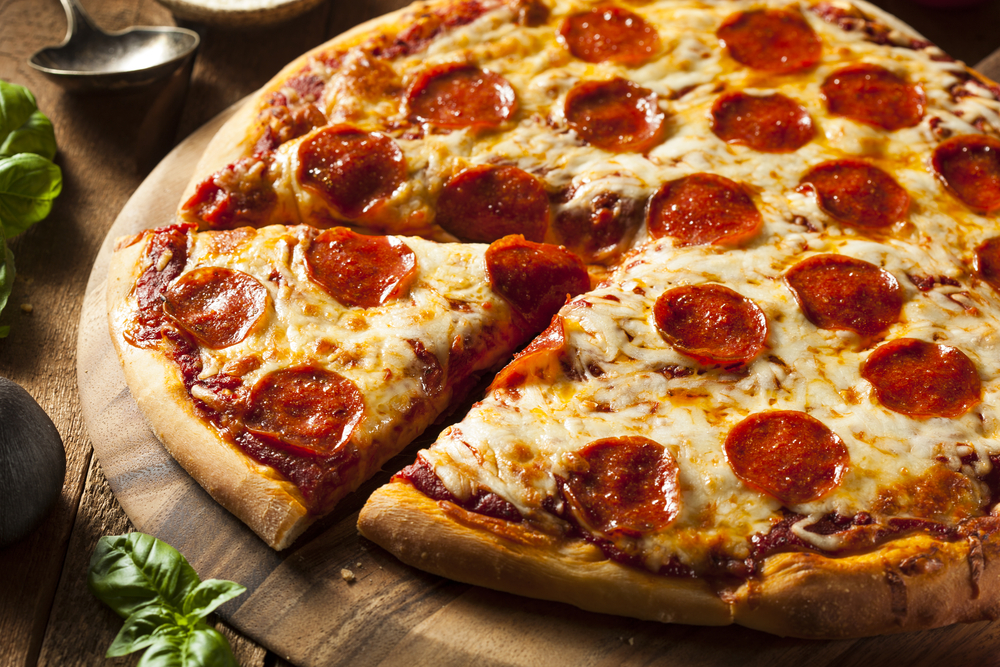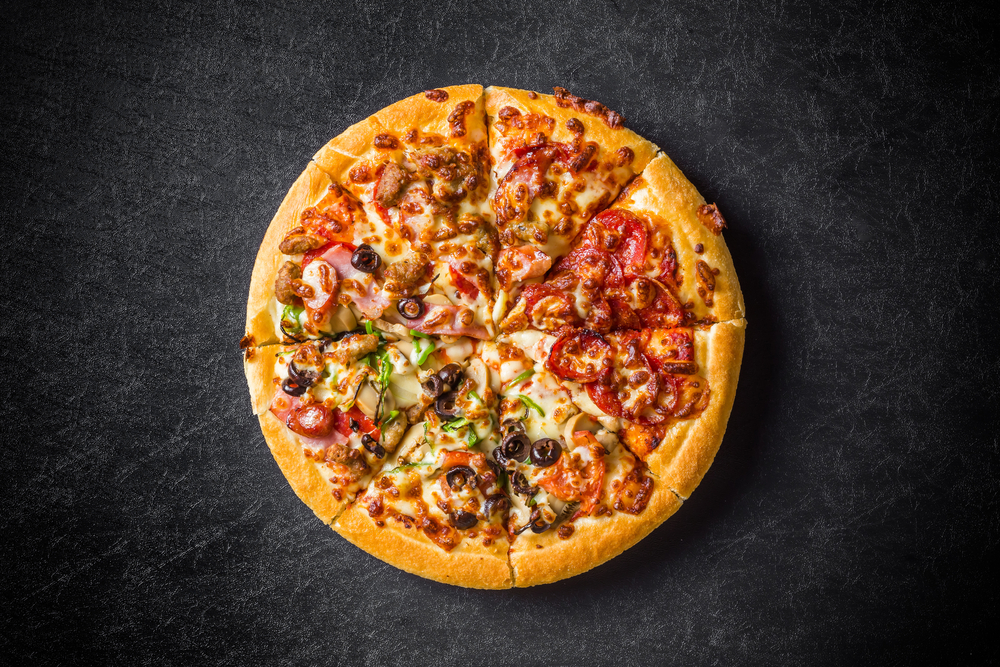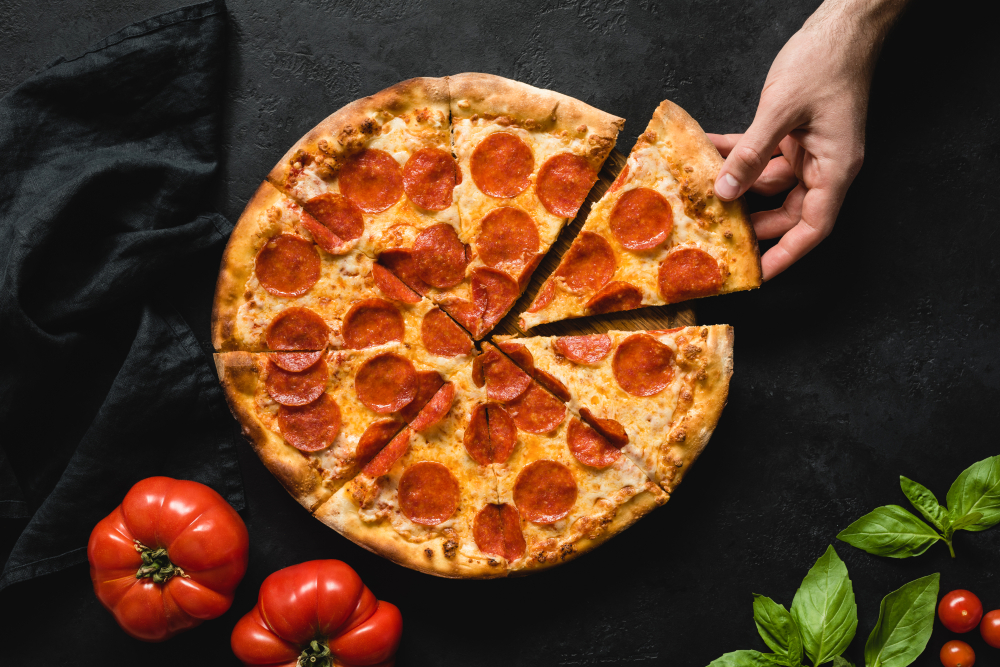Pizza is among the most widely consumed dishes on earth and for good reason. It’s delectable, adaptable, and simple to share with loved ones.

But many individuals ponder if pizza contributes to weight gain and whether it may be a component of a balanced diet.
There is no straightforward yes or no response. It relies on a number of variables, including the pizza’s style, its ingredients, and its size.
Pizza can be heavy in calories, fat, and sodium, especially if you frequently eat frozen pizza or order it from a fast food joint.
But if you prepare it at home with healthy ingredients and consume it in moderation, it can also be a filling and nutritious dinner.
We shall examine the benefits and drawbacks of pizza from a nutritional perspective in this post. We’ll look at the many elements of pizza, including the crust, cheese, sauce, and toppings, and evaluate how they affect our health.
Additionally, we’ll offer advice on how to make pizza healthier and more wholesome without compromising flavor or enjoyment.
This article can assist you in making selections regarding your favorite dish, whether you enjoy pizza or are a health-conscious eater.
Pizza Nutrition Facts
When it comes to pizza, we all know it’s delicious, but is it fattening? Let’s take a closer look at the nutrition facts of pizza to find out.

Calories in Pizza
The number of calories in a slice of pizza can vary depending on the type of crust, toppings, and size of the slice.
According to the U.S. Department of Agriculture, one slice (107g) of regular cheese pizza from a standard fast-food pizza chain has around 285 calories.
Macronutrients in Pizza
Pizza is typically high in carbohydrates, with one slice of regular cheese pizza containing around 35.6g of carbs. It also contains fat and protein, with 10.4g of fat and 12.2g of protein per slice.
Micronutrients in Pizza
While pizza is not typically thought of as a healthy food, it does contain some micronutrients. For example, pizza made with tomato sauce provides a source of lycopene, an antioxidant that may help protect against certain types of cancer.
Additionally, pizza toppings like mushrooms and peppers can provide a source of vitamins and minerals.
It’s important to note that while pizza can provide some micronutrients, it’s not a particularly nutrient-dense food. In other words, it doesn’t provide a lot of vitamins and minerals for the number of calories it contains.
Overall, it’s clear that pizza is not the healthiest food choice. However, it can be enjoyed in moderation as part of a balanced diet.
If you’re looking to make your pizza a bit healthier, consider choosing a thin crust, opting for vegetable toppings, and limiting the amount of cheese and meat.
Pizza and Weight Management
Pizza is a popular food that is enjoyed by many people around the world. However, it is often associated with weight gain and is considered to be an unhealthy food choice.

In this section, we will explore the relationship between pizza and weight management.
Can Pizza Help You Lose Weight?
While pizza is not typically thought of as a weight-loss food, it is possible to include it in a healthy diet and still lose weight. Here are some tips for making pizza a healthier option:
- Choose a thin-crust pizza instead of a thick crust to save on calories.
- Load up on vegetables as toppings to increase the nutrient content and fiber of your pizza.
- Opt for lean protein toppings like chicken or shrimp instead of high-fat meats like pepperoni or sausage.
- Use a smaller portion size or share a pizza with a friend to reduce calorie intake.
Can Pizza Make You Gain Weight?
Eating too much pizza or consuming it too frequently can lead to weight gain. Pizza is often high in calories, fat, and sodium, which can contribute to weight gain if consumed in excess. Here are some ways to enjoy pizza without sabotaging your weight management goals:
- Limit your intake of high-calorie toppings like cheese, meat, and extra sauce.
- Choose a smaller portion size and pair it with a salad or vegetable side dish to increase nutrient intake and reduce calorie consumption.
- Consider making your own pizza at home with healthier ingredients like whole grain crust, low-fat cheese, and plenty of vegetables.
Overall, pizza can be a part of a healthy diet when consumed in moderation and with the right toppings and portion sizes. By making smart choices and being mindful of your calorie intake, you can enjoy pizza without compromising your weight management goals.
Health Risks Associated with Pizza
Pizza is a popular food item that many people enjoy. However, consuming pizza regularly can lead to various health risks. In this section, we will discuss some of the health risks associated with pizza.
Heart Disease
Pizza is high in saturated fat, which can increase the risk of heart disease. Consuming too much-saturated fat can lead to high cholesterol levels, which can cause plaque buildup in the arteries. This can increase the risk of heart attack and stroke.
Cancer
Pizza toppings like pepperoni, bacon, and sausage are high in processed meats, which can increase the risk of certain types of cancer. Consuming these meats regularly can lead to an increased risk of colon, stomach, and pancreatic cancer.
Obesity
Pizza is high in calories, which can lead to weight gain and obesity. Consuming too many calories can cause the body to store excess fat, which can lead to various health problems like heart disease, diabetes, and stroke.
Diabetes
Pizza is high in carbohydrates, which can cause a spike in blood sugar levels. Consuming too many carbohydrates can lead to insulin resistance, which can increase the risk of type 2 diabetes.
Stroke
Pizza is high in sodium, which can increase blood pressure levels. Consuming too much sodium can lead to an increased risk of stroke.
Consuming pizza regularly can lead to various health risks like heart disease, cancer, obesity, diabetes, and stroke. It is important to consume pizza in moderation and to choose healthier toppings like vegetables and lean proteins.
Healthy Pizza Options
When it comes to pizza, it’s easy to assume that it’s always an unhealthy option. But with a few smart choices, you can make pizza a part of a healthy diet. Here are some tips for choosing healthy pizza options.

Choosing Healthy Toppings
One of the easiest ways to make pizza healthier is to choose healthier toppings. Here are some options to consider:
- Vegetables: Load up your pizza with veggies like mushrooms, peppers, onions, and spinach. Not only do they add flavor and nutrition, but they can also help fill you up.
- Lean proteins: Instead of fatty meats like pepperoni and sausage, choose lean proteins like chicken, shrimp, or even tofu.
- Fresh herbs: Adding fresh herbs like basil, oregano, and thyme can add flavor without adding calories.
Making Healthier Crust Choices
Another way to make pizza healthier is to choose a healthier crust. Here are some options to consider:
- Whole wheat crust: Choosing a whole wheat crust can add fiber and nutrients to your pizza.
- Cauliflower crust: Cauliflower crusts are a popular alternative to traditional pizza crusts. They’re lower in carbs and calories, and they’re a great option for people who are gluten-free.
- Thin crust: Choosing a thin crust can help cut down on calories and carbs.
Healthy Pizza Recipes
If you want to make your own healthy pizza at home, here are some recipes to try:
- Veggie Pizza: Top a whole wheat crust with tomato sauce, veggies like mushrooms, onions, and peppers, and a sprinkle of cheese.
- Chicken and Spinach Pizza: Top a cauliflower crust with tomato sauce, cooked chicken, spinach, and a sprinkle of cheese.
- Margherita Pizza: Top a thin crust with tomato sauce, fresh mozzarella, and fresh basil.
By making smart choices about toppings and crusts, you can make pizza a part of a healthy diet.
Unhealthy Pizza Options
When it comes to pizza, there are definitely some unhealthy options out there. In this section, we’ll take a look at some of the most unhealthy pizza toppings, crusts, and recipes to watch out for.

The Most Unhealthy Pizza Toppings
Some pizza toppings are definitely worse for you than others. Here are some of the most unhealthy pizza toppings to avoid:
- Pepperoni: This is one of the most popular pizza toppings, but it’s also one of the most unhealthy. Pepperoni is high in saturated fat and sodium, which can contribute to heart disease and high blood pressure.
- Sausage: Like pepperoni, sausage is high in saturated fat and sodium. It’s also often made with processed meats, which have been linked to cancer.
- Extra Cheese: While cheese can be a good source of calcium, too much of it can be bad for you. Extra cheese on your pizza means extra calories, saturated fat, and sodium.
The Most Unhealthy Pizza Crusts
The crust is another important factor to consider when it comes to the healthiness of your pizza. Here are some of the most unhealthy pizza crusts to avoid:
- Deep Dish: Deep dish pizza is delicious, but it’s also incredibly high in calories and fat. One slice of deep dish pizza can contain up to 700 calories!
- Stuffed Crust: Stuffed crust pizza is another high-calorie option. The cheese in the crust adds extra calories and saturated fat.
- Garlic Bread Crust: Garlic bread crust pizza may be tasty, but it’s also loaded with calories and saturated fat. Plus, the garlic bread can be high in sodium.
Unhealthy Pizza Recipes
Finally, some pizza recipes are just inherently unhealthy. Here are a few to watch out for:
- Meat-Lover’s Pizza: This pizza is loaded with processed meats like pepperoni, sausage, and bacon. It’s also often made with a high-fat crust and extra cheese.
- BBQ Chicken Pizza: While chicken is generally a healthier pizza topping, BBQ sauce can be high in sugar and calories. Plus, many BBQ chicken pizzas also come with bacon and extra cheese.
- Mac and Cheese Pizza: This pizza is exactly what it sounds like – macaroni and cheese on a pizza crust. It’s high in calories, saturated fat, and sodium.
Overall, if you’re looking for a healthier pizza option, it’s best to stick with a thin crust, vegetable toppings, and just a little bit of cheese.
Conclusion
Based on the information we have gathered, it is clear that pizza can be both healthy and unhealthy depending on how it is prepared and consumed.
It is important to keep in mind that pizza is a high-calorie food that is often loaded with saturated fat and sodium.
However, it can also be a good source of nutrients such as protein, calcium, and fiber, especially when made with whole grain crust and topped with vegetables.
If you are looking to indulge in pizza, it is best to do so in moderation and opt for healthier toppings such as vegetables and lean protein sources like chicken or turkey.
Avoid processed meats like pepperoni and sausage, which are high in sodium and saturated fat. You can also try making your own pizza at home using healthier ingredients and portion control.
Remember, pizza is just one part of a balanced diet. Eating a variety of nutrient-dense foods, staying active, and practicing moderation are key to maintaining a healthy lifestyle.







Add comment